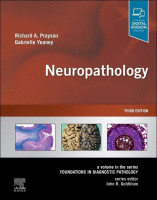Physical Address
304 North Cardinal St.
Dorchester Center, MA 02124

Skeletal muscle, which represents 40 % of the weight of a reasonably fit human, has one major function: converting food into force. The unit of contraction in skeletal muscle is the sarcomere, a 2.5 × 1 × 1 µm lattice of interdigitating thick (predominantly myosin) and…

Non-glial tumors constitute the bulk of neoplasms encountered in the central nervous system (CNS). They include a wide variety of tumor types and a spectrum of behaviors ranging from benign to highly malignant. This chapter discusses some of the more…

Gliomas and glioneuronal tumors constitute the largest and most heterogeneous group of primary central nervous system (CNS) tumors. Normal glia include astrocytes, oligodendrocytes, and ependyma; gliomas are analogously designated as astrocytomas, oligodendrogliomas, and ependymomas to reflect the nonneoplastic cell types…

LYSOSOMAL STORAGE DISEASES Lysosomal storage diseases (LSDs) are rare disorders caused by genetically transmitted lysosomal enzyme deficiencies. The resulting lysosomal accumulation of uncleaved substrates impairs cell function and causes cell death. Although some LSDs have been known for more than…

Infections of the nervous system are seen with increasing frequency, despite a general improvement in hygiene and the development of effective antibiotic therapies. This is due in part to the acquired immunodeficiency syndrome (AIDS) epidemic, the widespread use of therapeutic…

The majority of neurodegenerative diseases (NDDs) discussed in this chapter are definitively diagnosed only by neuropathological examination. Brain biopsy in living patients may be useful in prion diseases, in neoplasms and non-neoplastic disorders that cause cognitive impairment, and in identifying…

OVERVIEW OF CHAPTER Multiple sclerosis (MS) is the single most common demyelinating disorder and appears to be increasing in incidence and prevalence globally, even in traditionally low prevalence regions of the world. As such, when clinical and neuroimaging features suggest…

BRAIN DEVELOPMENT AND MALFORMATIONS: GENERAL PRINCIPLES Developmental disorders of the brain and spinal cord can be classified into location-based/regional categories, including abnormalities of the cortex, white matter, brainstem, and cerebellum, or according to the presumed etiologic mechanism. Etiologically, developmental anomalies…

SCALP INJURY A scalp injury occurs at the point of contact between an impacting force and the head. If the impacting force is significant enough, injury to the scalp results and has a varying appearance that is based on the…

Cerebrovascular disease is the fifth leading cause of death in the United States with about 140,000 stroke-related deaths each year. The terms “stroke,” “brain attack,” and “cerebrovascular accident” refer to an acute, nonepileptic alteration in neurologic status that lasts more…